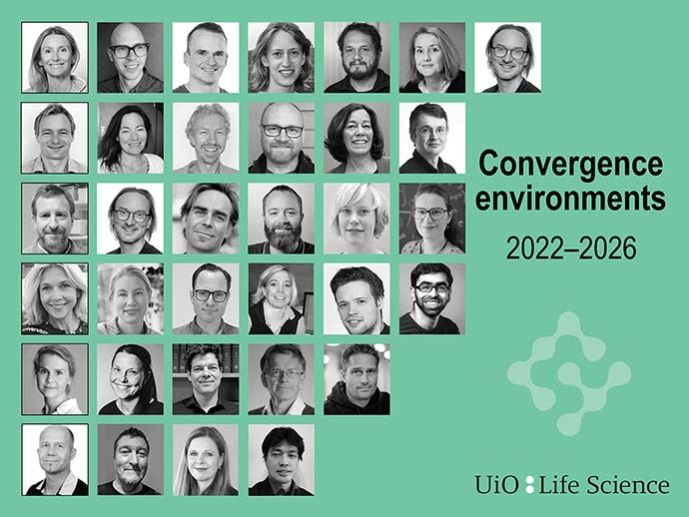
UiO:Life Science will fund six new convergence environments 2022–2026.
These interdisciplinary research groups will solve grand challenges with methods from biology, bioinformatics, chemistry, computational biology, computer sciences, economics, genetics, immunology, languages, law, mathematics, medicine, musicology, pedagogy, physics, pharmacy, philosophy, psychology, special needs education and sociology.
- We have been in operation long enough to see results from this interdisciplinary approach, we see that it leads to new insights and new solutions and we are confident it will contribute to increased value creation in the field of life sciences in the long term, says Director of UiO:Life Science Carl Henrik G?rbitz.
24 PhD and post doctor positions
The six convergence environments will receive altogether 24 doctoral and postdoctoral positions as well as expenditures. In total, this amounts to an investment of approximately NOK 100 million over four years.
The positions will be placed at host units at six UiO faculties.
- It is rewarding to see that researchers from faculties and units that have never been involved before are now represented in the new convergence environments. I take this as a sign that we have succeeded in our efforts to make the convergence environment initiative known and attractive, something our existing convergence environments have contributed to by creating awareness around their interdisciplinary research, says G?rbitz.
A digital application process
The call was announced in November 2020, and the application process started with digital information meetings in January 2021. Researchers were encouraged to register their profiles and ideas online and then met for digital speed dating, which took place on 18 February and 2 March. The director gave his feedback on 35 sketches that were submitted in March.
Finally, the 34 full applications, were assessed first by international experts and then by an international panel before the board of UiO:Life Science made their final decision 4 November 2021.
The six convergence environments 2022–2026
- AUTORHYTHM – the role of autophagy in healthy aging will study the recycling system of our cells in time and space to improve people's health and life span.
Read more -
Societal and environmental determinants of brain and cognition (AHeadForLife) will uncover how social factors and genes affect the brain and cognitive function throughout life.
Read more - Integrated technologies for tracking organoid morphogenesis (ITOM) will use advanced imaging technology and data analysis to improve stem cell derived organ representations.
Read more - Real world – artificial worlds: Improving causal inference in perinatal pharmaco-epidemiology using machine learning approaches on real-world and artificial data (UIO:RealArt) will use machine learning on health data and simulated data to understand the causal relationship between medication use in pregnancy and child development.
Read more -
Novel personalized management strategies for fibrosing diseases (FibroPET) aims to improve the course of the disease and treatment outcome of patients with fibrosing diseases.
Read more -
Modeling Human Multi-Organ Interaction in Disease - Cancer Cachexia (MORGI) will create a platform with organ representation technology to explain communication between organs in case of disease.
Read moreBackground
Funding of convergence environments with doctoral and postdoctoral positions is the most powerful instrument UiO:Life Science has to support interdisciplinary collaboration that will contribute to new insights and increased value creation in the field of life sciences.
The first six convergence environments were established in 2017. Eight new convergence environments were established in 2019. This is the third round of funding.
Life sciences and UiO:Life Science
Life sciences increase our understanding of the nature of life, and of ageing and disease.
UiO:Life Science is an interdisciplinary strategic area that will strengthen quality and interaction in research; recruit, educate and develop talents; and promote innovation in the life sciences related to environment and health.
The new life science building
In 2026, the new life science building will be completed. The building will be Norway's largest university and hospital building and will contribute to internationally competitiveness and increased value creation in life sciences.